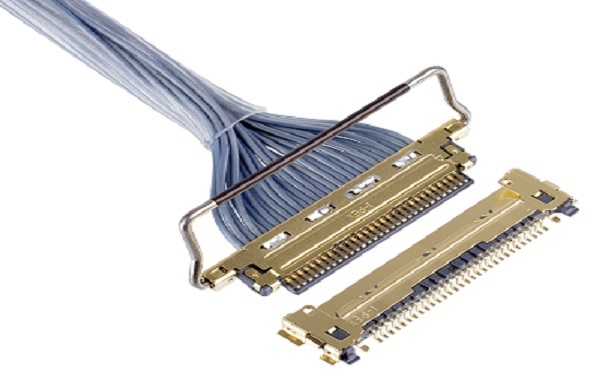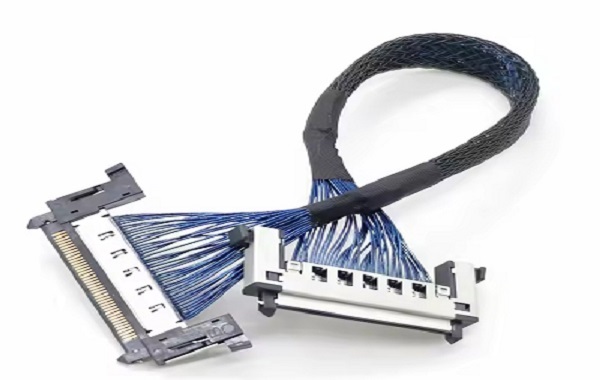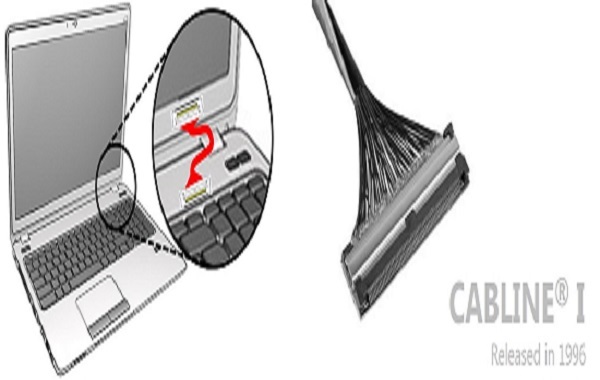With the continuous evolution of electronic devices towards thinness, speed, and high definition, the performance requirements for signal transmission systems are increasingly stringent. Traditional wiring and flexible circuits are gradually showing their limitations in high-speed signal transmission and anti-interference capabilities. Micro-Coaxial Cable, with its excellent electromagnetic shielding performance, flexibility, and high-frequency signal transmission ability, has quickly become an ideal choice for high-performance electronic devices such as display modules, cameras, and medical instruments. This article will explore the technical evolution and application expansion of micro-coaxial cable connectors from the perspective of the industry's development.

One, origin stage: dedicated transmission solutions in high-end medical equipment
The ultra-thin coaxial cable consists of a central conductor, insulation layer, shielding layer, and outer sheath, featuring excellent EMI (electromagnetic interference) suppression and signal integrity performance. Its earliest applications can be traced back to high-end medical equipment, aerospace systems, and precision measurement instruments, among other fields. These devices have extremely high requirements for signal stability and anti-interference capabilities, while the processing technology and terminal connection techniques for early ultra-thin coaxial cables were not yet mature, resulting in high manufacturing costs and limited application scope. At that time, ultra-thin coaxial cables were more regarded as exclusive components for high-precision instruments rather than standardized components for consumer electronics.

Demand Explosion: Structural Transformation Triggered by the Liquid Crystalization of Laptops
In the 1990s, laptops began to shift from monochrome displays to color LCD displays. The increase in display resolution and refresh rates brought higher demands for data transmission speed. Traditional FPC (flexible printed circuit) and multi-core cables, although somewhat flexible, gradually failed to meet the requirements for high-speed differential signal transmission, anti-interference, and spatial routing.
At this time, the ultra-fine coaxial cable stands out due to the following characteristics:
Excellent electromagnetic shielding performance, effectively suppresses noise interference.
Precise characteristic impedance control, meeting the requirements of high-speed differential signal transmission.
• High flexibility, suitable for complex motion structures such as hinges and folds;
Miniaturized outer diameter design, compatible with the compact space inside laptops.
It is these characteristics that make ultra-thin coaxial cables an ideal solution for connecting notebook LCD modules, laying a foundation for their popularity.

Three, Technological Breakthrough: I-PEX CABLINE Series Leads Industry Standards
Facing the dual challenges of high-speed signal transmission and flexible wiring, Japan's I-PEX Corporation made a breakthrough first. In 1996, I-PEX launched the world's first connector specifically designed for extremely thin coaxial cables——CABLINE I. This product successfully solved many technical difficulties in the process of welding, insertion and extraction, shielding continuity, and mass termination for extremely thin coaxial cables. The emergence of CABLINE I not only realized the standardized production of extremely thin coaxial cable bundles but also marked its formal entry into the consumer electronics field from the high-end industrial field. Since then, devices such as laptops, liquid crystal display screens, and camera modules have widely adopted extremely thin coaxial connection solutions, providing a reliable, lightweight, and efficient interconnection method for high-speed signal transmission.

The development of ultra-fine coaxial connectors is an inevitable result of the trend towards high-speed and lightweight electronic devices. From early high-cost specialized components for medical equipment to standardized interconnection solutions for laptops and display devices, its technical evolution reflects a balance between signal integrity, structural compactness, and manufacturing reliability. Now, with the rapid development of 5G, AI vision, automotive electronics, and wearable devices, ultra-fine coaxial connectors and their matching connectors are still being continuously optimized and upgraded, and are becoming an important support for the new generation of high-speed interconnection technologies.
I am
Suzhou Huichengyuan Electronic Technology, Long-term focus on the design and customization of high-speed signal cable harnesses and ultra-fine coaxial cable harnesses, committed to providing stable and reliable high-speed interconnection solutions. If you have related needs or want to learn more, please contact:
Manager Yin 18913280527 (WeChat number same)。



